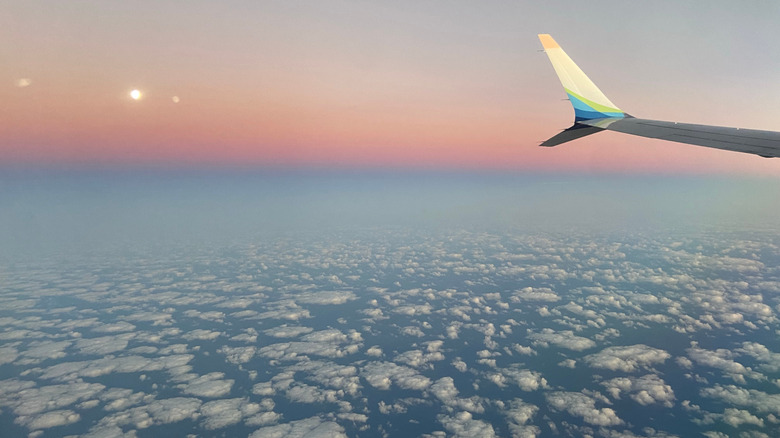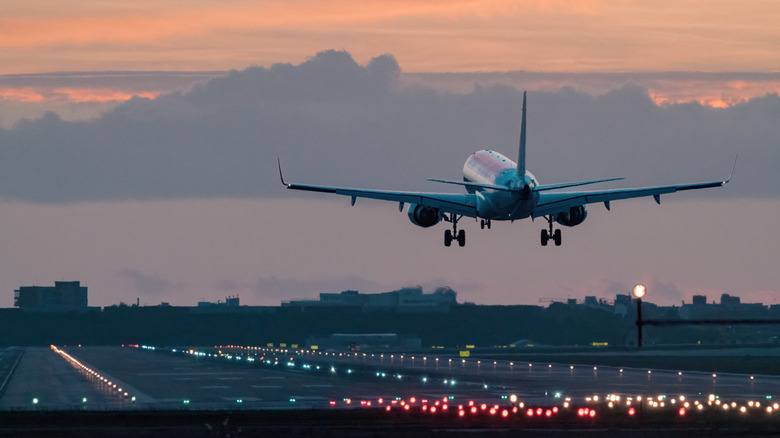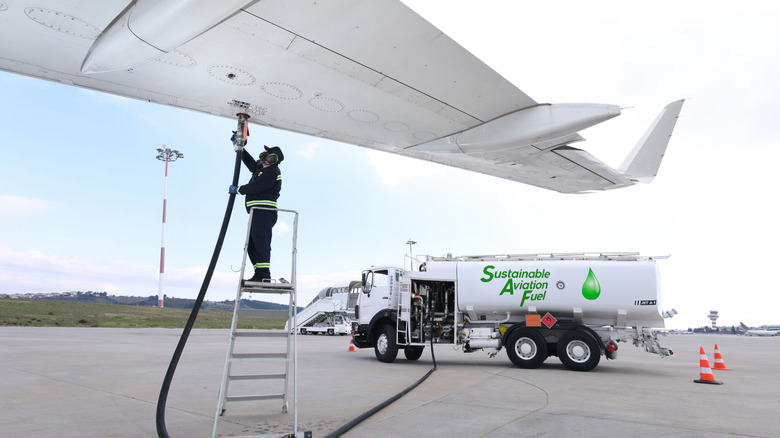The Unsettling Reason Why Planes Typically Avoid Flying Over The Pacific Ocean
If you're booking one of the longest flights in the world, like New York to Manila, you might find yourself staring at the flight map on the back of the seat in front of you and wishing that your flight was going across the Pacific instead of seemingly taking a detour to fly over the North Pole. However, there are a few very good reasons that flights don't usually fly right over the vast Pacific Ocean. One of the most important reasons is that, thanks to the curvature of the Earth, flying over the Pacific may not be the shortcut that it seems like it is when you look at the map. There is a more unsettling reason, too, though. Because of ocean weather patterns and distance from anywhere to fuel up or land in an emergency, flying such a long distance over the ocean can be risky.
That doesn't mean that there aren't any flights that go over the Pacific Ocean. If you live in the United States and are on your way to a quintessential Australian vacation in Perth, you are probably going to spend a significant amount of the trip flying across the Pacific. It can be done — most flights just avoid it when possible.
Why flying over the Pacific isn't the safest option
Flying is very safe, but that doesn't mean that airlines don't have to take precautions and prepare for unlikely emergencies. Just like the plane's oxygen masks, the routes charted by airplanes are designed to keep passengers safe. In general, routes are planned to have planes fly over as many airports as possible, because if something goes wrong, emergency landings at airports are a lot easier than a water landing in the middle of the ocean.
Even if a plane did successfully land on the ocean, it would be quite difficult to launch a full scale rescue mission for all the crew and passengers way out in the Pacific. In general, planes try to stay within a couple hours of an airport along the coast, just in case. The Pacific is also known for stormy weather, so the chances of turbulence are a lot higher. Thunderstorms with lightning strikes can pose a serious threat to safety.
Fuel is an issue when flying over the Pacific Ocean
While it might look like the shortest route between you and relaxing in Japan's steamy hot springs with monkeys is a straight line across the ocean when you look at it on a map, when you take the world from three dimensions down to two, the proportions are misleading. Because the Earth is a sphere, a curved flight path can actually be significantly shorter than a straight one. In addition to making your legs more likely to cramp up, longer flights are more expensive and require a lot more fuel.
If your flight is way out in the middle of the ocean, there aren't any options to refuel, either. Airlines know exactly how much fuel their flights need for different routes (and planes also carry emergency fuel on top of that, just in case the plane has to change routes or it takes more energy to get to their destination than expected) so it's extremely unlikely that a plane would run out of fuel in the middle of the Pacific — but not flying straight across the ocean is one of the ways that airlines guarantee that won't be an issue.


